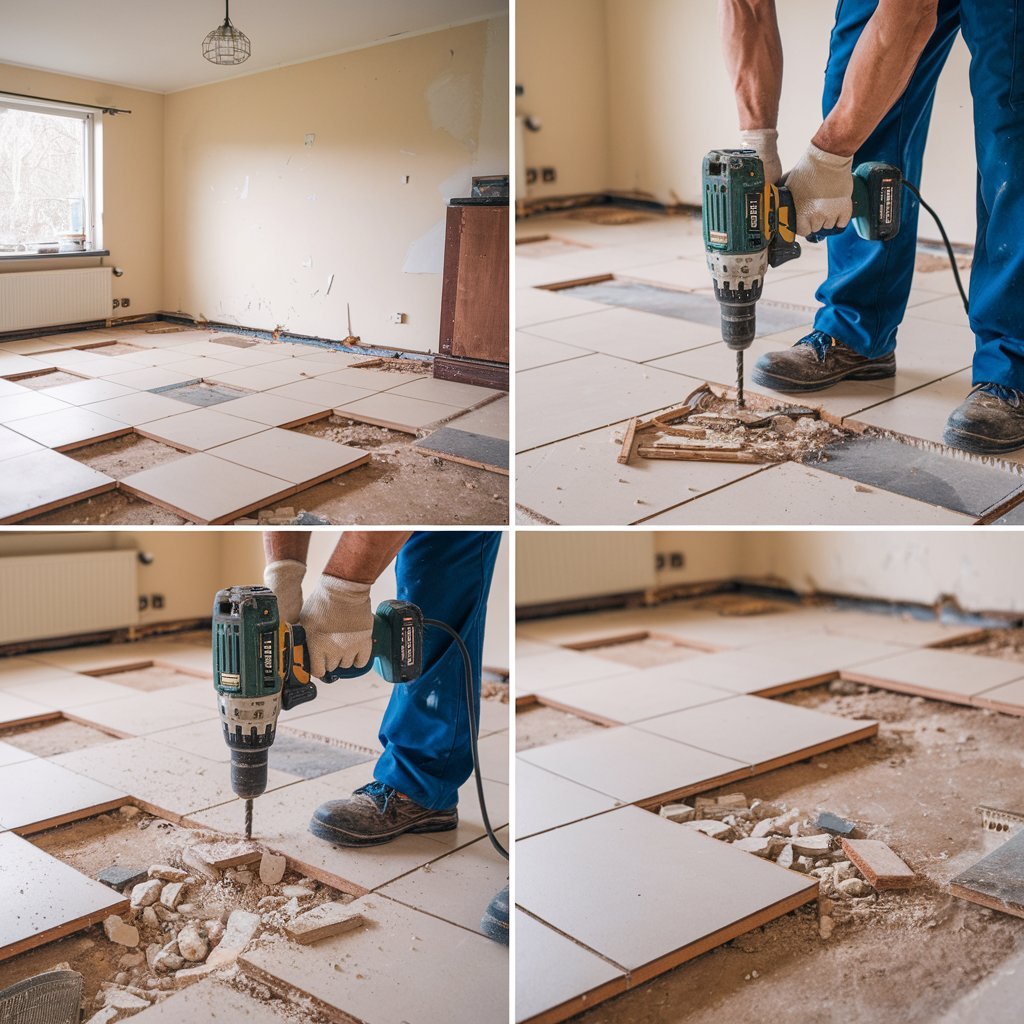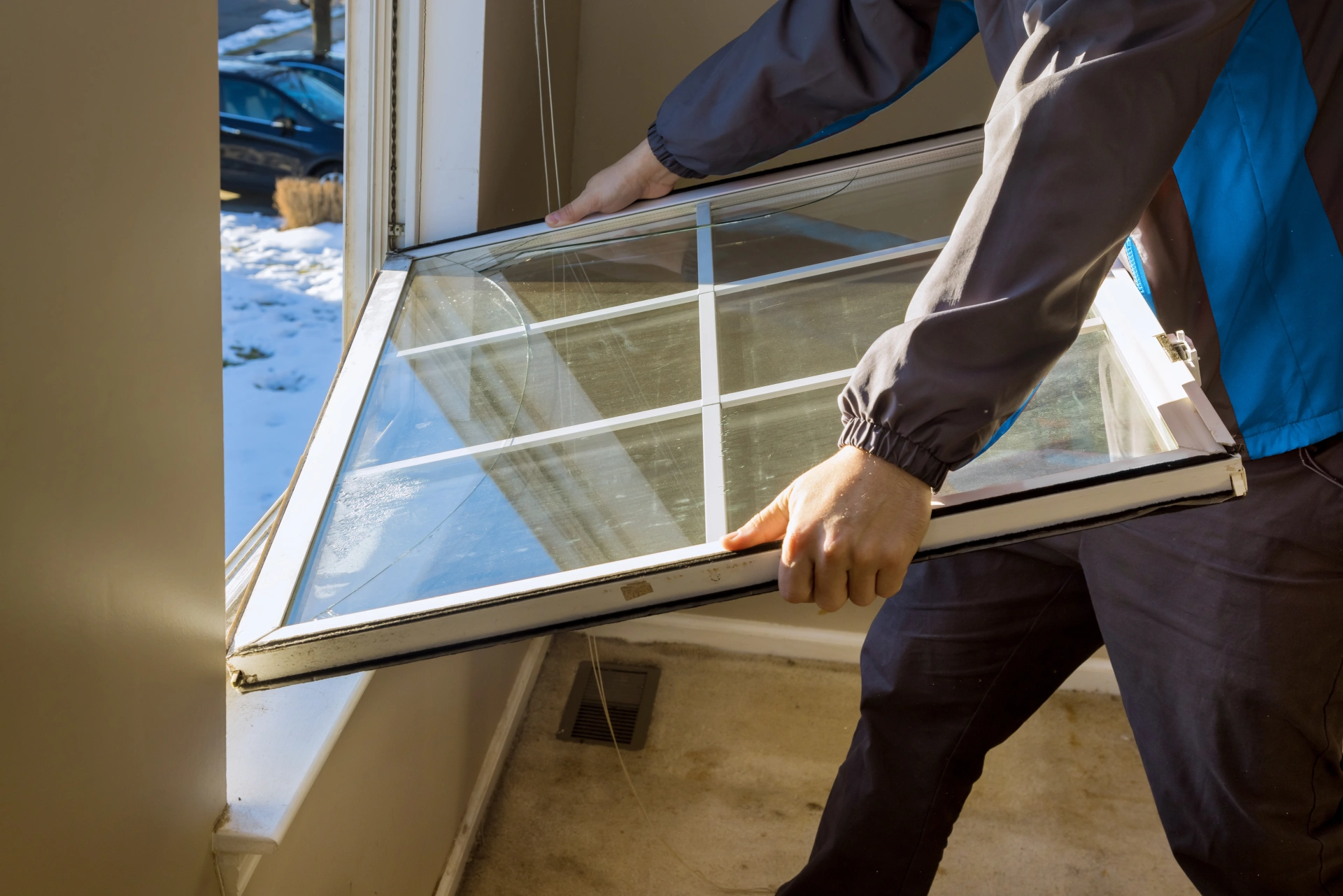If you’re looking to revamp your home and get rid of old, cracked, or simply outdated floor tiles, you’re not alone. Floor tile removal is often the first step in a home renovation project. Whether you’re upgrading your space, fixing damage, or just tired of the current look, tile floor removal can set the stage for a fresh, new design. However, removing floor tiles might seem daunting if you’ve never done it before. With the right methods, tools, and techniques, though, it’s a manageable DIY project or something you can leave to the professionals.
Why Remove Floor Tiles?
It’s important to understand why floor tile removal is necessary in the first place. Over time, tiles can become worn, cracked, or outdated. Whether you’re replacing old tiles with new materials or simply updating the room’s aesthetic, removing the old tiles is a critical first step.
- Wear and Tear: Old tiles can crack, chip, or become stained, making the entire floor look worn-out and unattractive.
- Changing Style: If you’re remodeling your home and want to switch up the design, removing outdated tile flooring is essential for a fresh start.
- Hidden Damage: Sometimes, tiles are hiding problems like mold, water damage, or structural issues underneath, so removing them allows for a thorough inspection of your subfloor.
Tools Needed for Tile Floor Removal
Before diving into methods, it’s important to gather the right tools. Having the proper equipment ensures efficiency and safety throughout the project. Here are the basics:
- Pry Bar/Chisel: These are ideal for lifting tiles gently without damaging the subfloor.
- Hammer: Used in combination with a pry bar or chisel to help break the tile’s seal.
- Floor Scraper: A wider tool that helps scrape up tile adhesive and grout remnants after the tiles are removed.
- Ride-On Scraper: If you’re tackling a large area, a ride-on scraper can save you time and effort by using a motorized, mechanical scraper that covers a wider surface area quickly.
- Utility Knife: Helps in cutting through adhesive and grout.
- Protective Gear: Includes safety goggles, gloves, a dust mask, and ear protection to avoid injury from flying debris and dust.
- Buckets and Trash Bags: For disposing of tiles and debris.
5 Best Methods of Tile Removal
Tile removal methods can vary based on the type of flooring, adhesive, and the size of the area you’re working on. Below are several methods, each with its pros and cons, to help you decide which is the best for your project.
1. Manual Tile Removal (Pry Bar and Hammer Method)
The most traditional method for tile floor removal involves using a pry bar or chisel and a hammer to loosen tiles one at a time. This method is best for small spaces and areas where tiles are in relatively good condition.
How it works:
- Start at a corner or edge of the room where the grout lines are exposed.
- Use the pry bar or chisel to wedge between tiles or grout lines, tapping gently with a hammer to loosen the tile.
- Once the tile is lifted, continue working your way across the floor.
Pros:
- Low-cost method requiring minimal equipment.
- Allows for precision, especially in smaller areas.
Cons:
- Can be time-consuming, especially in larger rooms.
- Requires physical labor and patience.
2. Floor Scraper Method
A floor scraper is a more efficient tool for removing tiles when dealing with larger areas. This handheld device works like a shovel, allowing you to slide the blade under the tile and pry it up with more leverage than using a chisel and hammer alone.
How it works:
- Start by inserting the blade of the floor scraper beneath the edges of the tile.
- Use the handle to pry the tile off the floor.
- Repeat for each tile across the area.
Pros:
- Faster than manual methods, especially for larger rooms.
- Reduces physical strain compared to using a chisel and hammer.
Cons:
- Can be tiring for very large areas.
- Might require extra effort for tough adhesives.
3. Ride-On Scraper (For Larger Areas)
When tackling extensive areas, such as an entire room or even a commercial space, a ride-on scraper is an ideal option. This machine is motorized and can cover large sections of flooring quickly, removing tiles efficiently and with minimal effort.
How it works:
- Ride-on scrapers are equipped with blades that rotate beneath the surface to break up tile and adhesive simultaneously.
- You simply operate the machine while it moves across the floor, removing tiles in a fraction of the time.
Pros:
- Incredibly efficient for large areas, reducing time and labor significantly.
- Great for spaces with extensive, well-adhered tiles.
Cons:
- Expensive to rent or purchase.
- Requires space and safety training to operate.
4. Heat Gun and Scraper
For glued-down tiles, especially those set with mastic (a type of adhesive), you may want to use a heat gun combined with a scraper. The heat softens the adhesive, making it easier to remove the tiles.
How it works:
- Use a heat gun to apply heat to the surface of each tile.
- Once softened, use the scraper to lift the tile from the floor.
Pros:
- Effective for tiles stuck with mastic adhesive.
- Can be used in smaller areas.
Cons:
- Takes longer for larger areas.
- The heat can be dangerous, requiring extra caution.
5. Chemical Adhesive Removers
In cases where tile adhesive is difficult to remove, applying a chemical adhesive remover can make the process of floor tile removal easier. These products are designed to break down adhesives so that tiles can be pried off without as much physical labor.
How it works:
- Apply adhesive remover to the grout and tile edges.
- Allow it to sit for a specified time (check the product instructions).
- Use a scraper or floor scraper to remove both tiles and residue.
Pros:
- Effective for tough adhesives.
- Makes it easier to remove remnants of glue or mastic.
Cons:
- Requires time for the product to take effect.
- Chemical products can be harsh, so proper ventilation is essential.
Step-by-Step Guide to Removing Floor Tiles
- Prepare the Area: Clear furniture and cover vents and light switches with painter’s tape. Ensure you’re wearing protective gear.
- Start from an Edge or Corner: Begin loosening tiles using the chisel or pry bar.
- Use a Floor Scraper for Larger Areas: Once you’ve removed a few tiles, switch to a scraper or power tool for faster progress.
- Break the Tiles Into Smaller Pieces: Use a hammer if needed to break tiles that aren’t easily removed in one piece.
- Remove Adhesive and Clean the Subfloor: Scrape off the adhesive or use a chemical adhesive remover. Clean the subfloor to prepare for new flooring installation.
Hiring a Professional vs. DIY
If you’re dealing with a smaller space or prefer a more hands-on approach, removing tiles yourself can save you money. However, for larger areas or if you’re dealing with extensive adhesive residue, hiring a professional tile removal service may be the best option. They bring the necessary tools and expertise to complete the job efficiently and safely.
Takeaway
Removing floor tiles can be a challenging yet rewarding task, which is why choosing the right method and having the right tools are key to a successful and efficient process. From manual tile removal using chisels and hammers to using high-tech ride-on scrapers, there’s an approach for every size and type of project. It’s important to consider your room’s size, the condition of the tiles, and the type of adhesive used before diving in.
At “Tear It Up!” Floor Removal, we offer professional tile floor removal services designed to make your renovation project smooth and hassle-free. Our experienced team uses top-of-the-line equipment, from manual tools to ride-on scrapers, ensuring a fast, efficient, and mess-free process.
Contact us today and let us help you create the home you’ve always wanted!
FAQs
1. How long does it take to remove floor tiles?
The time it takes depends on the method and the size of the area. Manual removal may take several hours for a small room, while a ride-on scraper can remove tiles in much less time for larger spaces.
2. What if my tiles are stuck with mastic?
Mastic can be difficult to remove. Using a heat gun or chemical adhesive remover can help loosen the adhesive, making tile removal easier.
3. Can I reuse the tiles after removing them?
If you plan to reuse the tiles, take extra care during the removal process. Cracked or broken tiles may not be suitable for reuse.
4. What should I do if the subfloor is damaged during tile removal?
If you discover damage to the subfloor, you may need to repair or replace it before installing new flooring. This could involve patching holes or leveling the surface.












Leave a Reply